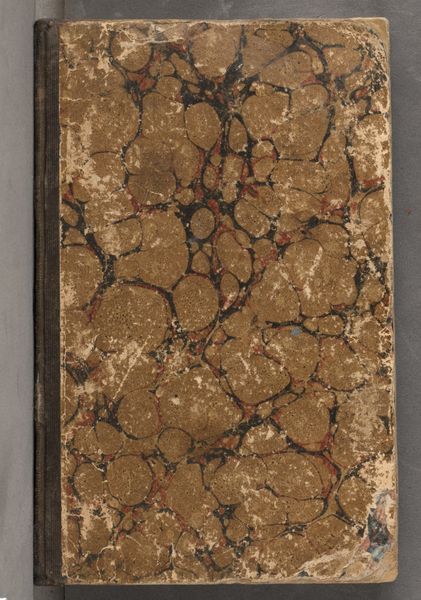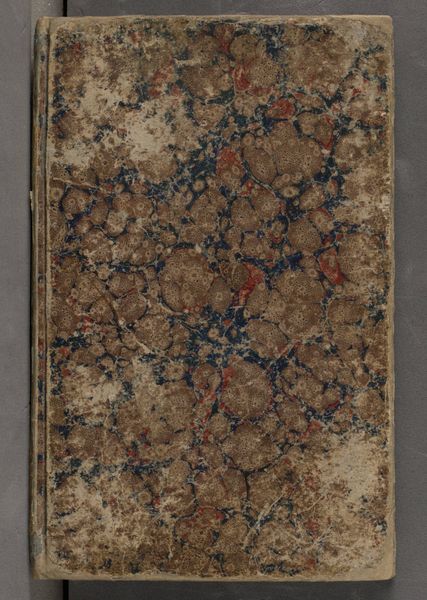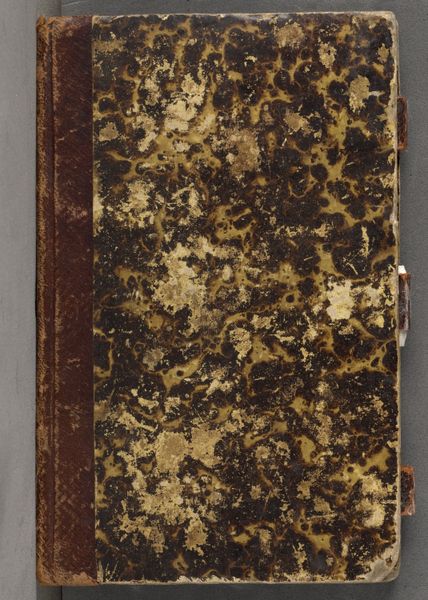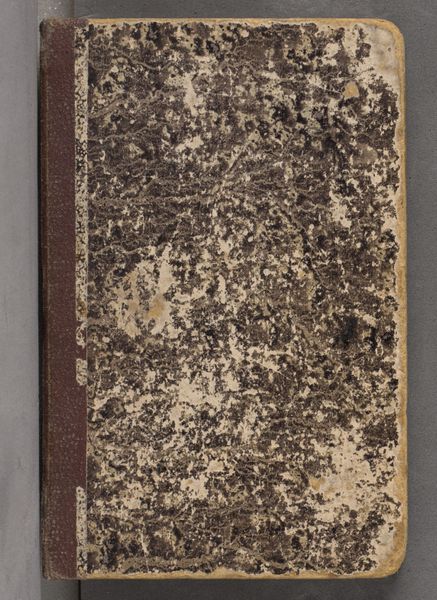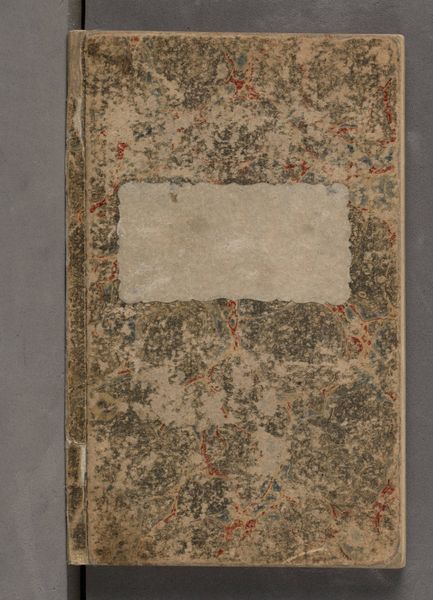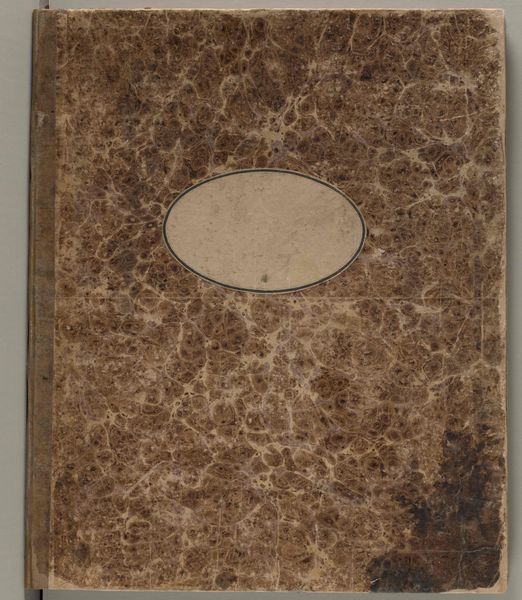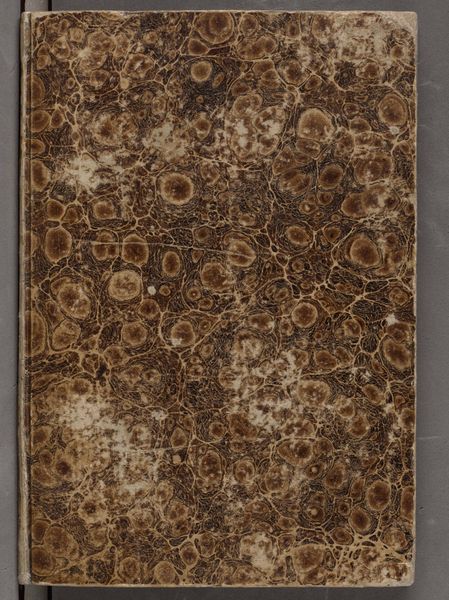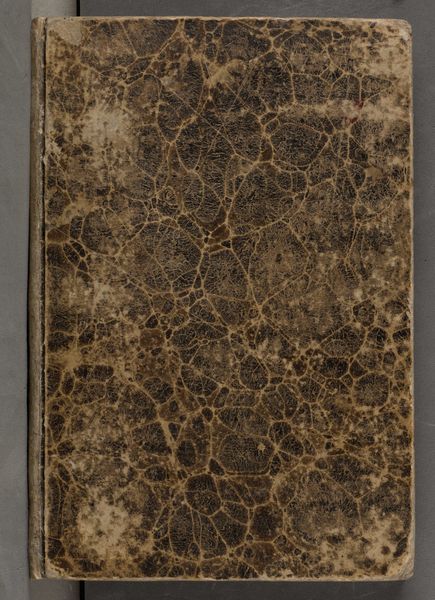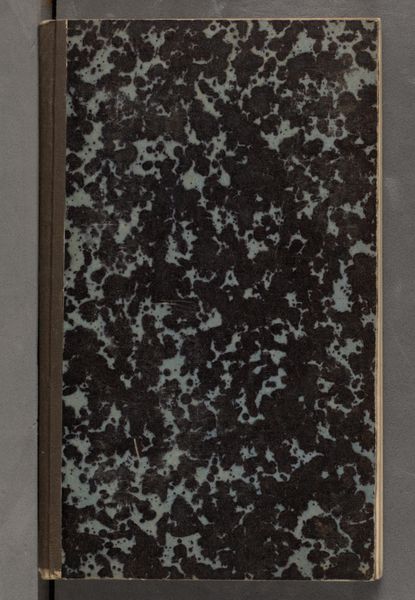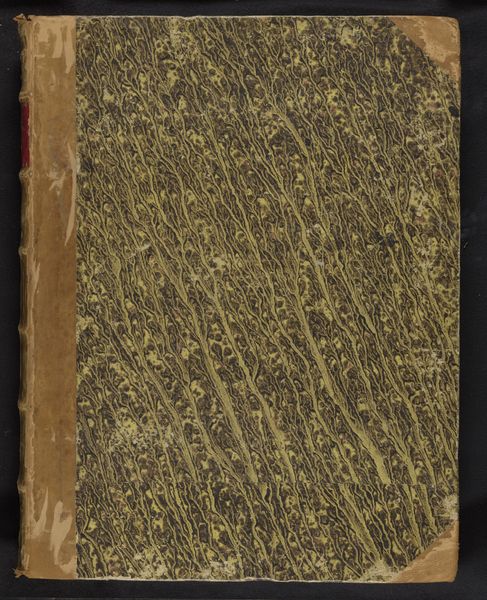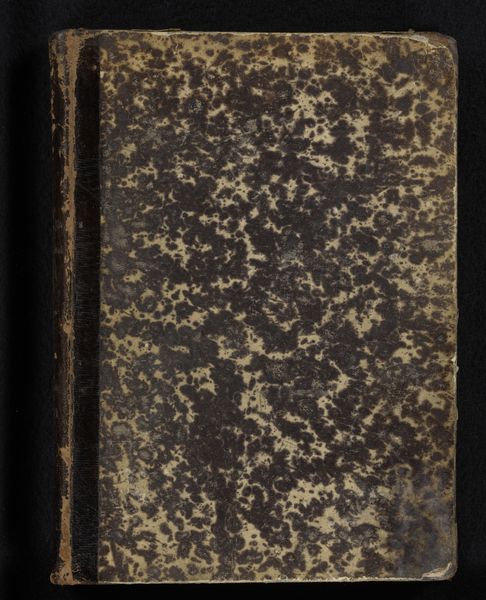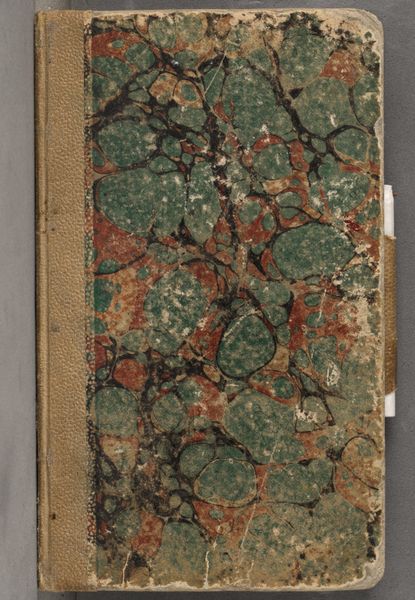
Copyright: Public Domain
Curator: This is Ludwig Metz's "Skizzenbuch" from around 1870, currently residing at the Städel Museum. It's a mixed-media drawing. I am curious to have your initial impression. Editor: Oh, wow, just from looking at it, it feels incredibly intimate. Almost like holding someone's secret thoughts, carefully bound between those marbled covers. Curator: The materiality is indeed important. We can consider the artisanal production of paper and the binding. These books weren't mass produced; there was a tactile element in their crafting. That influences how Metz and others worked. Editor: Absolutely. The marbling, though seemingly random, hints at the craftsman's hand— a deliberate chaos. Did this handmade quality impact Metz's sketches, encouraging a particular freedom or… intimacy, like I said? Curator: Possibly. A bound book signals intention. An artist might see it as a place for experiment or rigorous planning. A luxury sketchbook signals patronage or financial freedom, but we lack additional insights at this stage. Editor: You're making me think about Metz's physical relationship to it, constantly turning the pages, his hand on the paper... Curator: Exactly. It moves us past pure aesthetic appreciation, acknowledging labor. Someone prepared the paper, mixed the pigments for sketches. How does that shape our view of the artwork? The drawings inside cannot have been crafted without careful making processes preceding it. Editor: And there is a world contained in the small space! It does make you wonder what exactly the artist wanted to capture or what stories he wanted to preserve within this portable object. Thank you, it has given me a richer view on this. Curator: Indeed. The sketchbook is not simply about what Metz drew; it is a document, an object embodying artistic labor and revealing aspects of 19th-century practices.
Comments
stadelmuseum about 2 years ago
⋮
In the spring of 1870, Ludwig Metz evidently took the sketchbook with him to Greece and Italy, to Aegina, Rome, Civita Castellana and Tivoli. With the pencil, he mainly captured landscape motifs, mostly with ancient ruins, of which he made drawings from multiple perspectives. He seems to have been more interested in the relationship between landscape and architecture than in structural details. Frequently, he noted the date and (usually difficult to read) also the place beneath the drawing; he often left the back of the used pages blank. ‒ This sketchbook comes with loose pages from another of Ludwig Metz’s sketchbooks.For a full sketchbook description, please see “Research”.
Join the conversation
Join millions of artists and users on Artera today and experience the ultimate creative platform.
